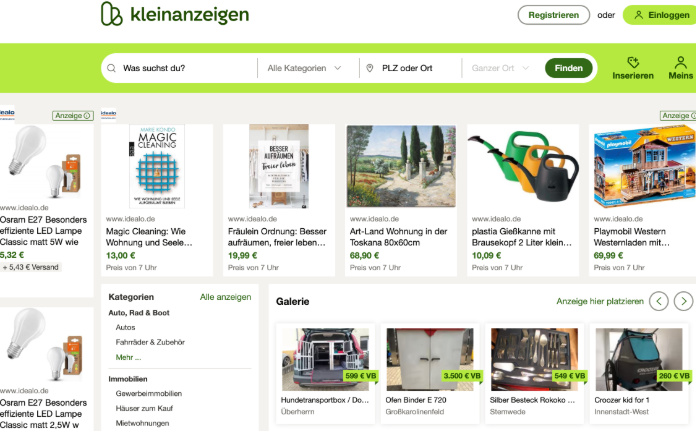How fast is retail media expanding? The $150 billion industry is growing more than 20% every year, according to Emarketer. By 2027, retail media will eclipse traditional TV advertising and tie with social media as the No. 2 marketing channel, trailing only search.
Academia is finally taking notice, says Sri Rajagopalan, co-founder of The CPG Guys media firm and co-host of The CPG Guys podcast. “Retail media has been around for 20 years since Google shopping started, but nobody was paying attention,” he notes. “It was behind the scenes. But it really took off during COVID and now it’s a verifiable phenomenon.”
The phenomenon is also quantifiable. Researchers at leading universities like Northwestern and the University of Arkansas’s Sam M. Walton School of Business are studying retail media’s impact on consumers’ online and offline behavior, with an eye on how AI analytic insights are transforming the field. And prestigious institutions like Cornell are teaming with real-world practitioners to offer a rigorous academic framework for retail media strategy.
“Institutions like Cornell are stepping in because they know that the industry needs structured thinking, cross-functional fluency and a talent pipeline that’s fluent in both data and retail fundamentals,” says Parag Shah, co-founder Chief Growth Officer of Think Blue retail media consultants. “It’s no longer about media platforms. It’s about enterprise transformation.”
Cornell Brings Retail Media into Focus
Academia’s burgeoning interest in retail media is turning into action. In May 2025, Cornell University hosted the Retail Media Strategy executive education program in New York City. The program took nine months to develop. Rajagopalan and Peter V.S. Bond, his CPG Guys podcast co-host, collaborating with Daniel Hooker of Cornell’s Johnson College of Business, designed a rigorous curriculum around Cornell’s requirements and the needs of the industry.
Over four days, 55 participants attended sessions led by Cornell professors and researchers, as well as industry leaders from STRATACACHE, Nestle, Instacart, Uber and NielsenIQ. Attendees were a diverse mix, representing some of the world’s largest retailers (Walmart, CVS, etc.), brands (PepsiCo, Mondelez, Purina, etc.), and ad agencies (Flywheel, Critio, etc.).
The program emphasized actionable insights. “If we truly want to educate, the most important part is the takeaways,” Sri says. “What is memorable? What’s applicable in your job tomorrow morning and a year out, not just theoretically.”
To that end, on Day One, participants were given three case studies for three different verticals: a beauty brand, a pet food purveyor, and a health and wellness food startup. Over the course of the program, they worked in groups to develop, and create a presentation, for retail media strategies for one case study each. At the program’s end, attendees received a Retail Media Strategy Certificate from Cornell as well as 24 hours of professional development.
In-store in the spotlight
Highlighting the growing importance of in-store retail media in omnichannel merchandising strategy, Chris Riegel, CEO of STRATACACHE, described what he called the “lost mile paradox” where 93% of consumer spending occurs in physical stores yet only 0.02% of digital marketing budgets target in-store environments.
“Websites and Mobile have been the shiny object for retailers for years when it comes to adtech, but the reality is that online channels are highly saturated and often untrustworthy once off of the retailers own properties. This session gave participants the opportunity to delve into the untapped potential of in-store digital media and explore the opportunities, metrics and persuasive power of advertising right at the point of decision.”
Riegel outlined the evolution of in-store retail media from basic print displays to today’s AI-driven, hyper-personalized digital content, and discussed how cutting-edge sensor technology is letting retailers mine data-rich insights into customers’ shopping behavior. “In-store sensor technology is producing real-time actionable insights that brands and retailers can use to ensure that marketing messages are profoundly effective.”
ROI was a focus of many of the sessions. Think Blue’s Shah gave one of the program’s most popular presentations, a discussion of how retailers and brands can move from joint business planning, often a contentious process, to joint value creation. “Joint business planning frameworks feel outdated in a world where media, merchandising, marketing and digital commerce are all colliding,” says Shah. “I think the topic hit home because it wasn’t theoretical. It was grounded in the real tensions that retailers and brands face today.”
Next Stop: Sophomore Year
Given the enthusiastic feedback from this year’s program, Cornell has set its eyes on the future. The university has reached out to Sri about hosting it again in 2026, and he and Bond are already thinking about the next iteration of the curriculum.
“We spent maybe 15% of the program discussing why retail media is important,” he reflects. “Next year we won’t need to emphasize that. The whole room gets it. We want to take a much deeper dive into consumer attitudes and habits connected to data.”
And further down the road, Sri sees the academic study of retail media evolving along with the industry. “Any one of these new phenomena in academia morph over three to five years,” he says. “Five years out, the single most important phenomenon that’ll change media will be artificial intelligence. As AI becomes more and more prevalent, we’ll see a complete metamorphosis of retail media, and academia will be studying that with great interest.”













